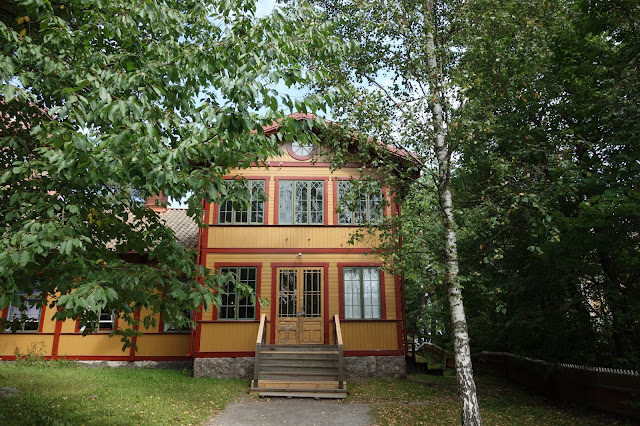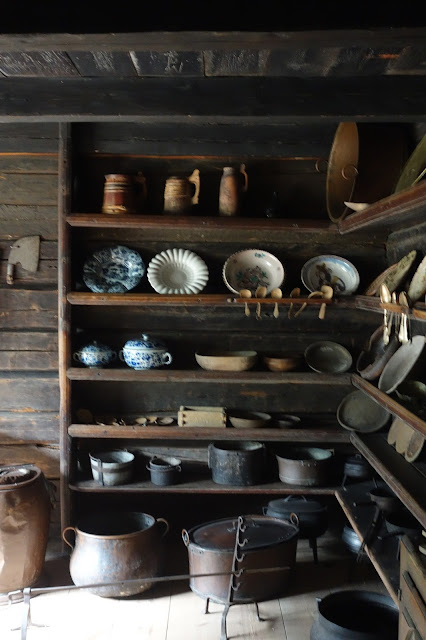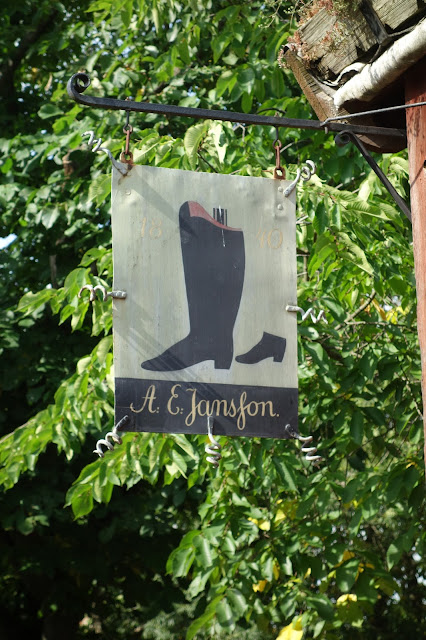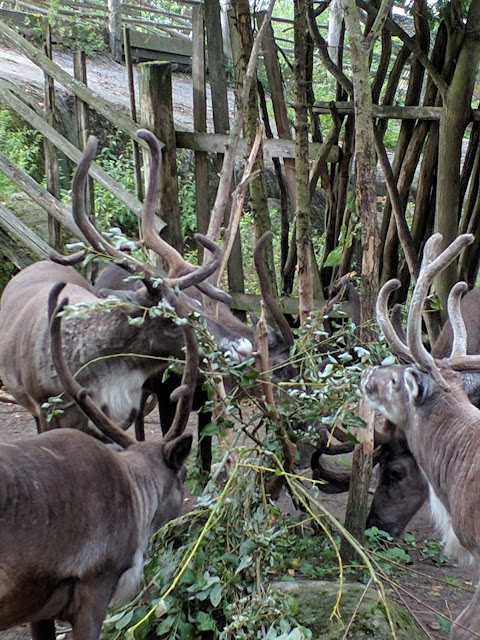our starter seafood platter - YUM with sauces above...
you can see the walls are plywood but the place is quite nicely done up-
ah they have one of my faves on the drink menu!
the oyster course - Phil did four and I had six- #loveoysters
my drink arrived finally! LOL
Phil's shrimp and my tartare both excellent!-
back to the hotel and the luxury of no wake up time the next morning!
so we were off to Skansen for a trip around this wonderful park- Skansen is the first open-air museum and zoo in Sweden and is located on the island Djurgården in Stockholm, Sweden. It was founded in 1891 to show the way of life in the different parts of Sweden before the industrial era. The 19th century was a period of great change throughout Europe, and Sweden was no exception. Its rural way of life was rapidly giving way to an industrialised society and many feared that the country's many traditional customs and occupations might be lost to history. Artur Hazelius, who had previously founded the Nordic Museum on the island of Djurgården near the centre of Stockholm, was inspired by the open-air museum, founded by King Oscar II in Kristiania in 1881, when he created his open-air museum on the hill that dominates the island. Skansen became the model for other early open-air museums in Scandinavia and later ones elsewhere. Skansen was originally a part of the Nordic Museum, but became an independent organisation in 1963. The objects within the Skansen buildings are still the property of the Nordic Museum.
After extensive travelling, Hazelius bought around 150 houses from all over the country (as well as one structure from Telemark in Norway) and had them shipped piece by piece to the museum, where they were rebuilt to provide a unique picture of traditional Sweden. Only three of the buildings in the museum are not original, and were painstakingly copied from examples he had found. All of the buildings are open to visitors and show the full range of Swedish life from the Skogaholm Manor house built in 1680, to the 16th century Älvros farmhouses.
This place is wonderful and the last time we visited the weather was not optimal so we were thrilled to have a dry day this trip....
we enjoyed our time here and had a quick lunch at one of the restaurants - then we took the tram back to the hotel to pack and think about logistics for our return to the US the following day - but this evening brought a return visit to gastrologik which I will detail in the final post from the trip - up next... worth checking back for...





















































No comments:
Post a Comment